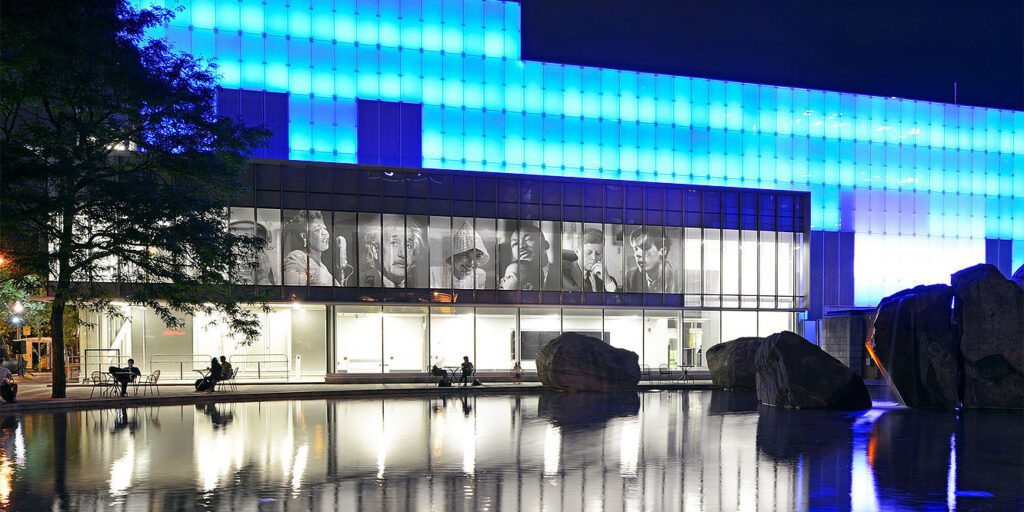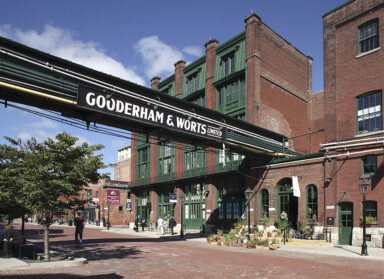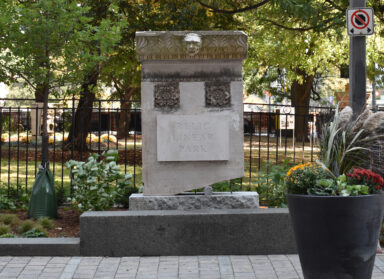A guest article by Brendan Stewart—Assistant Professor, Landscape Architecture, University of Guelph
Stone plays an outsized role in defining many of Toronto’s most beloved and well-used public spaces. Of course there is something singularly enchanting about the material itself, but as important is how it is arranged and put together — the artistry and craft that elevates the average to the exceptional.
Stone and stone work is something I’ve been thinking about more and more, starting with an article I wrote last year in Ground Magazine about dry stone walls, which has led to my involvement as a guest speaker at the upcoming Dry Stone Canada Festival on Amherst Island at the end of the month, and a talk next week at ERA with visiting Scottish stone artist David Wilson (RSVP here), which will explore ideas about the creative use of stone in public spaces.
In Toronto, a recent recurring theme is the importing and re-purposing of ancient precambrian boulders; carefully selected, removed and transported at great expense from northern Ontario’s Canadian shield wilderness, and strategically re-installed in vibrant downtown settings.
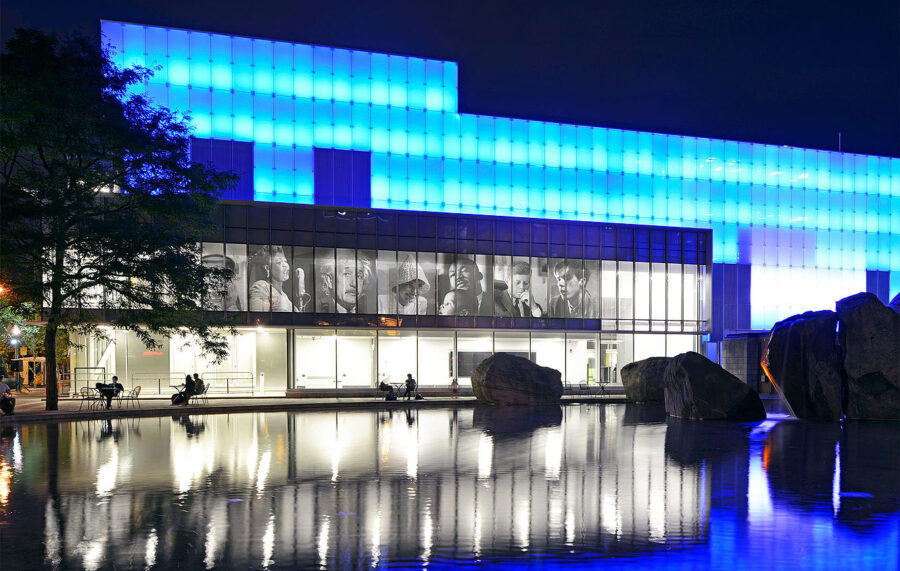
Think of Devonian Square at Ryerson, created in 1978 by landscape architects Richard Strong and Steven Moorhead, which features artistic groupings of massive boulders scattered around the plaza, and is the setting for winter scenes of ice skaters whose silhouettes are dwarfed as they weave in and around the rock.
Then, there’s the giant granite outcropping that defines Village of Yorkville Park, created in the early 90s by US landscape architects Martha Schwartz, Ken Smith, David Meyer and PWP Landscape Architecture. An iconic landscape landmark to match any in Toronto, the experience of emerging from underground at Bay station to meet a friend for coffee on the warm rock is unique to Canadian urbanism.
Sugar Beach by Claude Cormier + Associés, opened in 2010, pays homage to the granite outcropping at Yorkville Park, but integrates playful white and red candy-cane stripes, referring to the active Red Path sugar factory that animates the dramatic, working waterfront views.
And finally, there is the newly opened Trillium Park, designed by lead landscape architects LandInc, which features the 83 metre long ‘Moraine Bluff’ — an artfully sculpted, complex wall of stone that was designed using an innovative combination of digital modelling and in the field craft. Laid out in full on the floor of a quarry in Dwight Ontario, the wall was then transported and re-constructed on the lakeshore at Ontario Place[1].
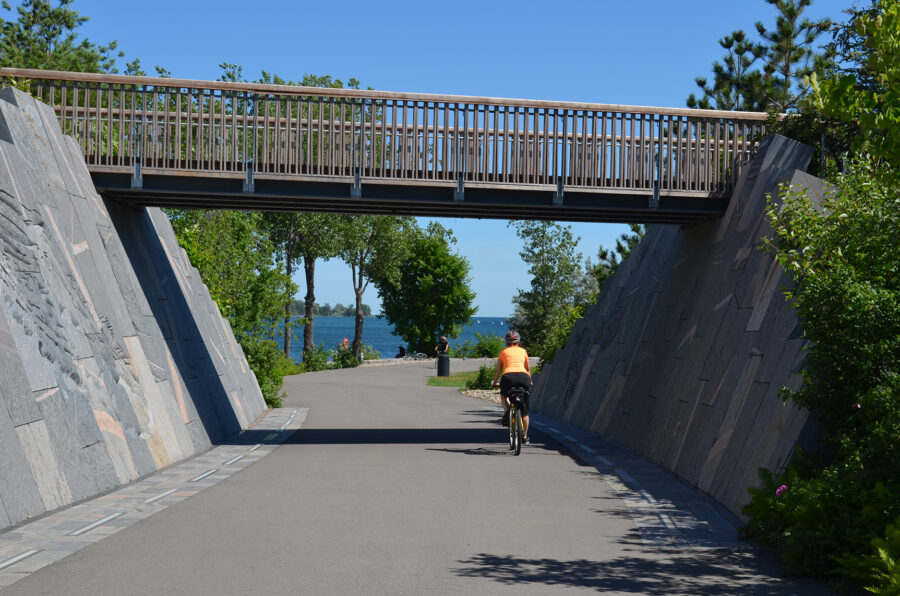
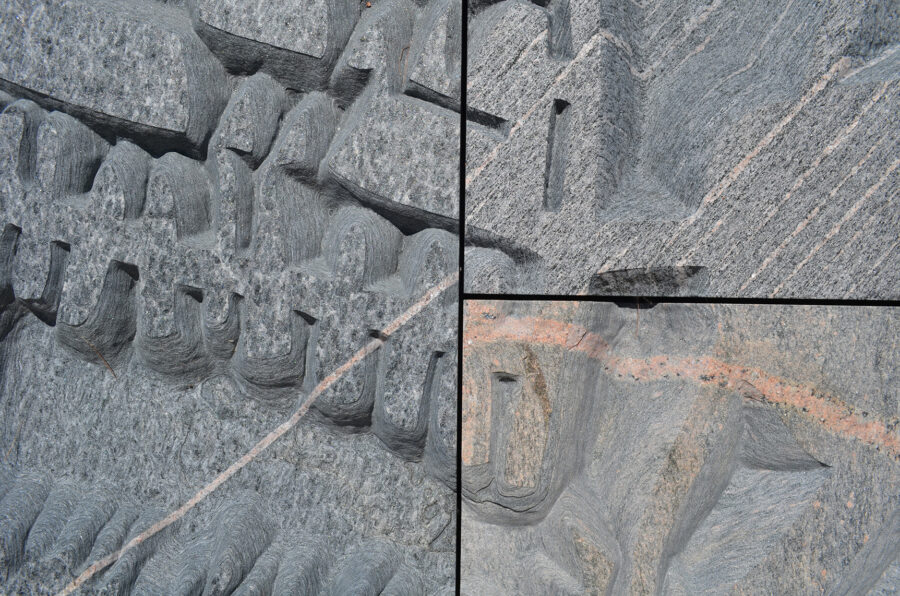
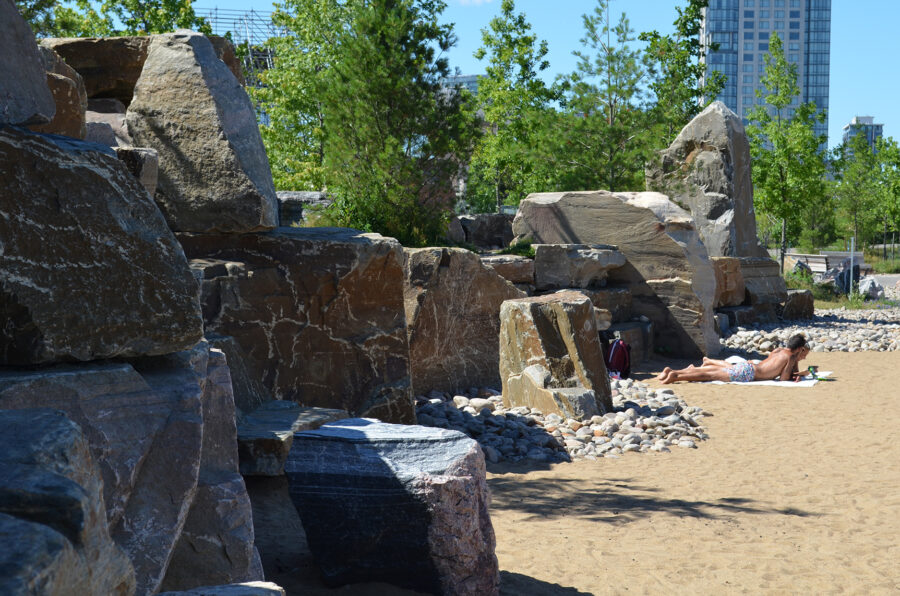
These projects, all representing in one way or another the ancient and sublime landscapes of the near north, all go to extraordinary lengths logistically, technologically, and artistically to bring the sensual and intangible resonance of stone into the city to create powerful civic experiences.
Stone, of course, has been used in many other wonderful ways in Toronto’s public realm. From interpreting and commemorating the history of the Irish Famine migrants who landed in Toronto in 1847 at Kearns Mancini’s Ireland Park (2007), to defining tranquil academic courtyards such as the Quadrangle at University College, executed by landscape architect Michael Hough in the mid 1960s[2].
And before this, there is the rich legacy of carved stone, integrated into the great buildings of 19th and early 20th century Toronto, some of which remain in situ, and some of which can be explored, as salvaged and re-constructed artifacts in the unique Guild Park and Gardens at the top of the Scarborough Bluffs. This wonderful and curious place is described and explored in a 2016 article in Ornamentum by ERA alum Tatum Taylor here.
For more fascinating discussion on the topic of creative urban use of stone and placemaking, join us at ERA on Monday, September 24 with Scottish stone artist David Wilson (RSVP here).
[1] See ‘Romance of the Stone: When metaphor meets technology’ by Patrick Morello in Landscapes Paysages v.19, Winter 2017.
[2] See ‘Quiet, Green, and Orderly: The History of the UC Quadrangle’ by Jane Wolff
